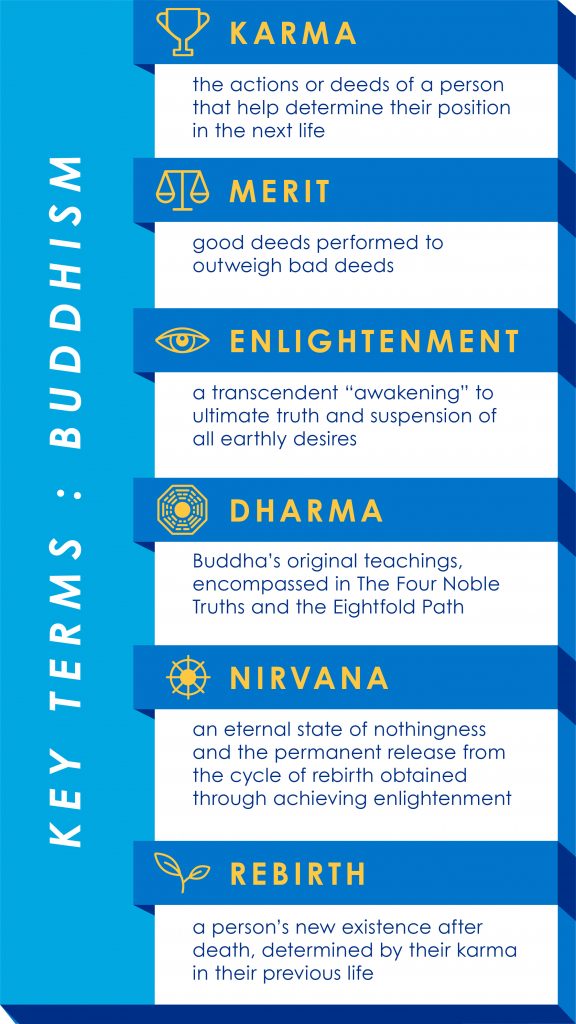 Two hundred years after Siddhartha Gautama died, missionaries of his movement were sent out.
Two hundred years after Siddhartha Gautama died, missionaries of his movement were sent out.
Otherwise known as the Buddha, Gautama unofficially founded Buddhism after achieving ultimate enlightenment. This movement remained fairly local to Siddhartha’s home in northern India until King Ashoka sent Buddhist missionaries throughout India and into Sri Lanka, China, Tibet, Mongolia, Japan, South Korea, most of Southeast Asia, and parts of North Africa.
As people from these regions began to implement the Buddha’s teachings, divergent doctrines and practices emerged. Buddhism absorbed and incorporated the local belief systems of many of the cultures it reached, and the Buddha’s teachings were passed down orally for centuries before eventually being written down in two languages, Pali and Sanksrit. Today, Buddhist beliefs and practices vary, and it is difficult to make a universal statement about what exactly every Buddhist believes. However, most adhere to a common devotion to the Buddha’s life and several fundamental concepts.
Important Beliefs in Buddhism
The Buddha’s aim was to escape suffering and be released from the cycle of rebirth. Buddhists today have the same goal. When a Buddhist reaches a transcendent level of enlightenment—most often achieved through dedicated meditation—a Buddhist has achieved nirvana, an eternal state of perfect peace, happiness, and enlightenment.
Buddhists believe the process of being reborn over and over is determined by the fruits of their karma—their deeds and actions—in the present life. Their deeds can help tip the balance of karma in their favor by making merit. Making merit, or earning good karma, is achieved through acts such as visiting a temple, making donations to a monk, or repeating chants to cleanse the mind from worldly desires.
At the core of the Buddha’s dharma—his collective teachings—are The Four Noble Truths.
- Suffering exists.
- Desire is the cause of suffering.
- There is freedom from suffering.
- The Eightfold Path is the way to gain freedom from suffering.
The Eightfold Path comprises eight ways of living that will help a Buddhist reach nirvana: right understanding, right thought, right speech, right action, right livelihood, right effort, right mindfulness, and right concentration. Basically, the more you can make yourself “right,” the better chance you have of escaping rebirth.
As Buddhism took root in different parts of Asia, it split into several sects. Here are three prominent sects, along with how Buddhism is typically practiced today in the West.
Theravada Buddhism
Theravada Buddhism is the oldest and most conservative branch of Buddhism. Theravada Buddhists adhere strictly to the Pali Canon—the earliest written texts of the Buddha’s teachings—as their authority for understanding his teachings. They emphasize the Buddha’s claim that he was an ordinary man, not a god. Like Buddha, they believe divine beings may exist but cannot help us. They believe rigorous self-effort is required to attain nirvana, and the path is a demanding one for the individual, who must abandon worldly living and desires.
For this reason, it is primarily the monks, who choose to devote their entire lives to following Buddha’s teachings and withdraw from normal life, that reach nirvana. Because attaining nirvana is so difficult and unlikely for the average person, most Theravada Buddhists spend their efforts on making merit that will ensure favorable karma and a better rebirth. This branch of Buddhism is prominent in Sri Lanka, Thailand, Laos, and Myanmar.
Mahayana Buddhism
In contrast, Mahayana Buddhism is the more liberal and the largest branch of Buddhism. Mahayanists use the Sanskrit version of the Buddha’s teachings. These scriptures emerged much later than the Pali Canon and are known as Sutras. They incorporate Pali texts as well as thousands of other volumes that contain extensions of the Buddha’s message. Taken as a whole, the texts often present contradictory teachings. Therefore, there are more varied beliefs and practices among Mahayanist adherents.
The Sutras maintain there are multiple universes and multiple Buddhas. They view the Buddha (Siddhartha Gautama) as a transcendent being, in direct contrast to what he believed about himself. The Sutras teach that the path to enlightenment is open to everyone. All people, not just monks, can attain nirvana.
Another significant element of Mahayana Buddhism is the introduction of bodhisattvas. Bodhisattvas are figures that have already attained nirvana, but instead of going there immediately, they have compassionately chosen to wait and assist individuals who cannot get there on their own for various reasons, such as lack of discipline or insufficient merit making. Compassion is one of the highest ideals within this branch. Mahayana Buddhism holds mass appeal and is practiced in many countries including China, Korea, Japan, and Vietnam.
Vajrayana Buddhism
Vajrayana Buddhism is an offshoot of Mahayana Buddhism with a special emphasis on the magical and the occult. Vajrayana Buddhists add to the Mahayana scriptures a collection of sacred texts called Tantras. These texts have roots in Hinduism and describe secret methodologies and practices to hasten the path to nirvana. Some of these include special hand positions called mudras that channel mythical power, certain postures of the body (yoga), and sacred phrases or mantras that bear magical power when repeated over and over.
There is also an important circular diagram known as the mandala that represents cosmic spaces and spiritual relationships. Deep meditation on the mandala leads to out-of-body experiences. Like the Mahayana branch, Vajrayana Buddhism is deeply eclectic and has its own expression in every culture, often absorbing existing rituals and religions. It is most commonly practiced in Tibet, Nepal, and Mongolia.
In the United States
Although Buddhism is most predominant in Asia, it is also now widely embraced in the US. Its emergence in America can be traced back several generations to the first Chinese and Japanese immigrants in the mid-1800s, popularized by influencers such as D. T. Suzuki and the poets of the Beat generation in the fifties and sixties “taking refuge in the Buddha Dharma Sangha.”
It’s fairly common for many present-day celebrities and other Americans to embrace a few elements of Buddhist teachings. Many American converts to Buddhism choose to forgo the more mythical methodologies of the religion in favor of private meditation and study of philosophy.
Learn how to initiate spiritual conversations with Buddhists.
Leigh Merryman is a writer for IMB. She serves with her family in Southeast Asia.
Video produced by Andrew Rivers. He and his wife serve with IMB in Southeast Asia where he works as a videographer.

